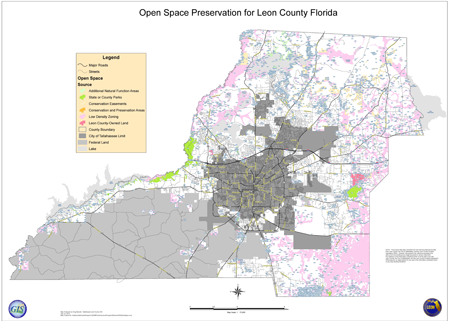Flooding is a natural phenomenon of every river and floodplains are a natural component of the environment. Floodplains are areas adjacent to rivers, ponds, lakes, and coastal waters that are periodically flooded at different points in time. They are hydrologically important, environmentally sensitive, and ecologically productive areas that perform many functions. Floodplains contain both cultural and natural resources that are beneficial to society. Understanding and protecting the natural functions of floodplains helps to reduce flood damage and protect resources.
Floodplains are important for the natural storage and conveyance of floodwaters, the protection of water quality, and groundwater recharge. Over the centuries, floodplains develop their own ways to handle flooding and erosion with natural features that provide floodwater storage and conveyance, reduce flood velocities and flood peaks, and curb sedimentation. Natural controls on flooding and erosion help maintain water quality by filtering nutrients and impurities from runoff, processing organic wastes, and moderating temperature fluctuations. These natural controls also contribute to recharging groundwater by promoting infiltration and refreshing aquifers, and by reducing the frequency and duration of low surface flows.
Riverine systems such as Black Creek, Bradford Brook, Gum Creek, Munson Slough, the Ochlockonee River, and the St. Marks River in Leon County vary in steepness, width, stream flow, sediment deposition, and erosive characteristics. The natural functions associated with a particular floodplain differ throughout the length of the system. The dynamics of stream and river migration and periodic flooding, which can occur multiple times within the same year with various durations from hours to days, form and continually change floodplains. Periodic flooding of riverine systems and the related processes of erosion and deposition determine the shape of the floodplain, the depth and composition of soils, the type and density of vegetation, the presence and extent of wetlands, the richness and diversity of wildlife habitats, and the depth of groundwater. Within the floodplain, a major conveyance component is the floodway, which is defined as the area of the watercourse and adjacent floodplain necessary to carry the base flood without increasing water surface elevation more than one foot. Development within the floodway is highly regulated due to its crucial conveyance component as wells as to help maintain some of the important natural resources and functions of the floodplain.
Flooding occurs naturally along every river and coastal area. Floodplains provide a variety of essential functions including floodwater conveyance and storage, groundwater recharge, wave attenuation, stream bank erosion control, reduction in sedimentation rates, water quality maintenance, and support of highly productive ecosystems. When flooding spreads out across the floodplain its energy is dissipated, floodwaters slow, and sediments are deposited out into the floodplain. The sediments carried in floodwaters are nutrient-rich and when deposited, create a fertile environment for vegetation, support a high rate of plant growth, maintain biodiversity, and enhances land suitable for farming. Floodplains are critical wildlife and natural habitat areas by serving as breeding and feeding grounds for fish and other wildlife. They also create and enhance waterfowl habitats, and help to protect habitats for rare and endangered species.
Floodplains provide cultural, educations, recreational, and scenic values to humans. Native American settlements and early cities were often located in floodplains because they provided abundant food, access to water supply, and the easiest mode of travel. Consequently, floodplains include many of the nation's earliest archaeological and historical sites. Floodplains are very scenic areas, making them ideal locations for parks and outdoor recreational activities such as water-oriented sports, boating, swimming, hiking, and camping are all dependent on floodplain areas. Wildlife resources in floodplains can be managed for observation, recreation, hunting, and fishing. Parks, bike paths, open spaces, and wildlife conservation areas are all aesthetic features that are important to citizens, increasing a communities overall quality of life and making the community more appealing to potential employers, investors, residents, property owners, and tourists.
Because of the importance of floodplains and the many benefits they provide, Leon County has enacted regulations to protect these areas. Nothing but rainwater is allowed to drain into the storm drains located in the streets, curbs and right-of-ways. Help keep the streets, waters, and floodplains of Leon County clean by reporting dumping of any liquid or material into stormdrains or waters of the County to Leon County Code Enforcement by calling 606-1300 or visiting the Leon County webpage. In addition, Leon County regulates the development activities within the floodplain. In most cases, no fill or other alteration shall be made to the topography or vegetative cover in any floodplain. In cases where placement of fill and impacts to the floodplain are unavoidable, compensating volume must be provided and mitigation for the impacts must be provided. Often times, when development occurs on a property, the floodplains located on the property are placed in a conservation easement to protect the resources in perpetuity.
Leon County also works to preserve open space areas within the floodplain and maintain them in their natural state. This is done through flooded property acquisition, creation of greenways and parks, limiting development in the floodplain, and protecting features with conservation easement. The open space areas preserved in the floodplain as well as the undeveloped areas in the floodplain are shown in Figure 1.
Floodplains contain a wealth of cultural and natural resources that are an great value to society. Humans have always been attracted to floodplains for their many benefits; however, poor planning and development in floodplains takes a toll on the natural functions of floodplains and can cause erosion, degradation of water quality, loss of wildlife habitats, loss of valuable property, and an increase in severity and frequency of flood losses. Understanding the importance of maintaining the natural functions of floodplains can lead to better floodplain management approaches that will better protect the natural and beneficial functions of floodplains.

